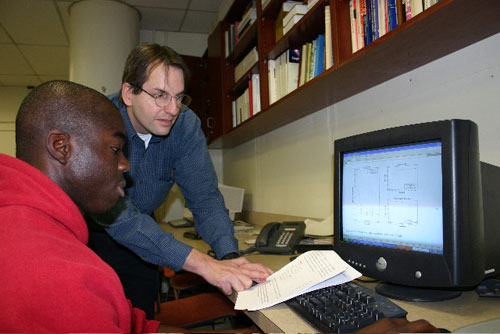Poly Professor Collaborates on Post-Hurricane Water Decontamination

The devastation wreaked by Hurricane Katrina on New Orleans posed massive public health problems not the least of which was treating contaminated flood water before it came in contact with humans or was pumped into natural reservoirs. National Science Foundation-funded researchers, including Jose Pinto, an associate professor of chemical and biological engineering (CBE) at Poly, have developed a novel system that uses a simple water purification technique that can eliminate 100 percent of the microbes in New Orleans water samples left from Hurricane Katrina. The technique makes use of specialized resins, copper and hydrogen peroxide to purify tainted water.
The system, safer, cheaper and simpler to use than many other methods, breaks down a range of toxic chemicals. While the method cleans the water, it does not yet make the water drinkable. However, the new system may eventually prove critical in limiting the spread of disease at disaster sites around the world. “After the disaster of Hurricane Katrina,” Pinto points out, “a need emerged for simple water decontamination treatment processes that could be operated by non-technical personnel, are cost effective and do not generate toxic by-products.”
The treatment system that Pinto and the researchers are developing is simple: a polymer sheet of resins containing copper is immersed in contaminated flood water. The addition of hydrogen peroxide generates free radicals on the polymer. The free radicals remain bound to the sheet where they come in contact with bacteria and kill them. To develop their process, the researchers built upon a century-old chemical process called the Fenton reaction—a process wherein metal catalysts cause hydrogen peroxide to produce large number of free radicals.
Pinto explains that free radicals are atoms or molecules that have an extra electron in dire need of a partner; they obtain the partner by stripping it from a nearby atom, damaging the “victim” in the process. In large quantities, the radicals can destroy toxic chemicals and even bombard bacteria to death or irreparably damage a microorganism’s cell membrane.
Researchers Vishal Shah and Shreya Shah of Dowling College in Long Island, New York, and Boris Dzikovski of Cornell University collaborated with Pinto. They will publish their findings in the journal Environmental Pollution.




